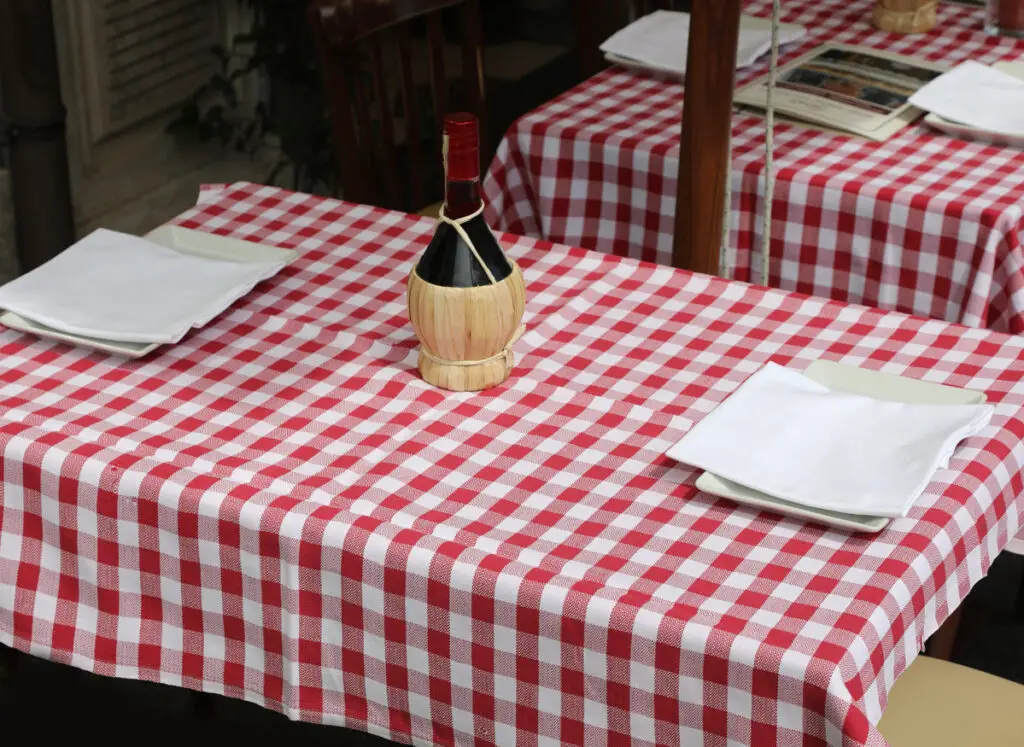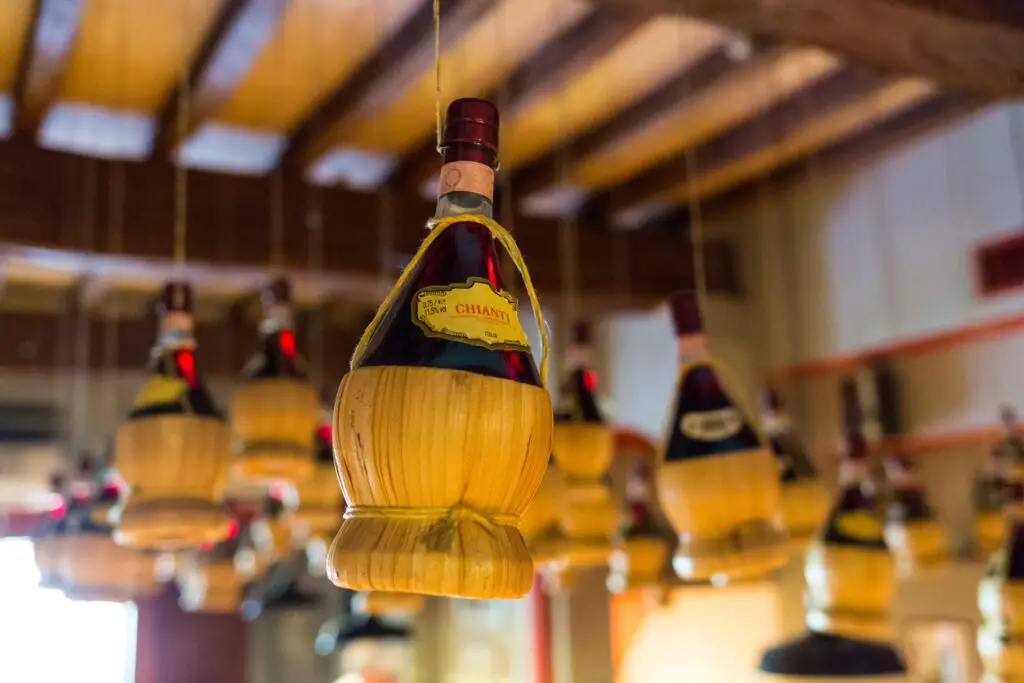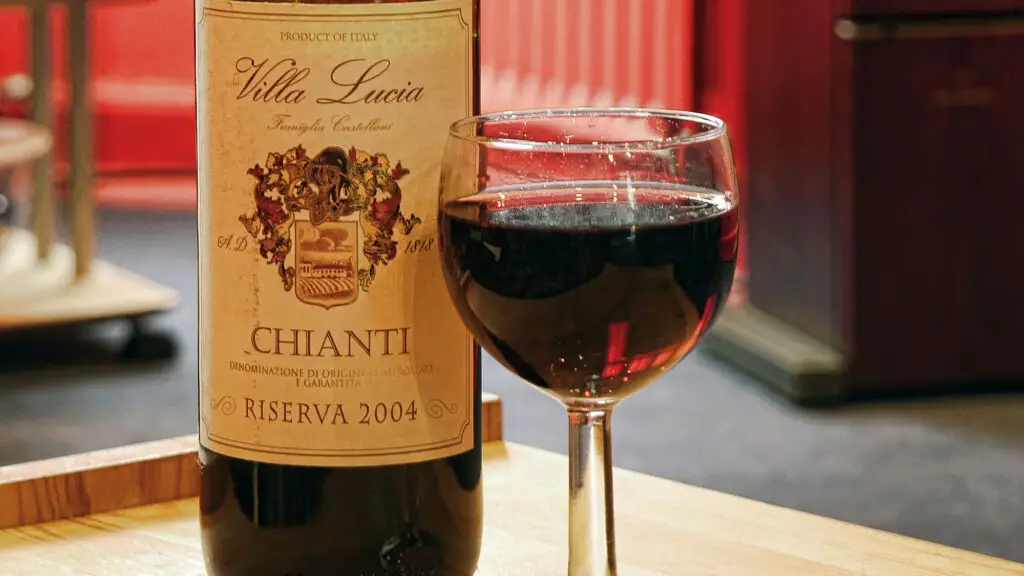Getting to know the details of one type of wine is the first step on the journey to becoming a wine connoisseur. The dry and bold taste of quality Chianti wine has been a favorite of wine lovers and casual wine drinkers for centuries, and there isn’t a wrong way to enjoy it. But, there are a few ways to maximize your enjoyment of a flavor. So, while you are enjoying a glass of wine, you may start to wonder, should Chianti breathe?
The answer to this important question is yes! Most Chiantis are young wines with a strong acidic flavor. If you are a newbie to Chianti, you may find this flavor unappealing. But, if you let it decant and aerate for an hour or two, then you will discover a whole new flavor within the same bottle of wine. But you can also enjoy Chianti right away if you like how it tastes.
How does aerating Chianti change its flavor? Glad you asked In this article, we’ll go over exactly why you should let Chinati breathe as well as why it changes the flavor of the wine. Now let’s dive deeper, shall we?
There is so much more to this one-of-a-kind wine than just aeration, so let’s get into it!
What (or Where) is Chianti?
You may be wondering where the name of this wine comes from, and similar to most wines, it stems from the place it is made. The Chianti region of Tuscany is one of the most beautiful in the whole area, as well as the most beloved by visitors from around the world.
The Chianti region extends over the provinces Florence and Siena, covering all of the areas between these two cities and reaching east toward the Valdarno and west to the Val d’Elsad’Elsa. The wine area goes further than the two cities, all around Florence and toward Arezzo, Pistoia, and Montepulciano.
Author Note: Chianti is a mesmerizing region with green hills covered in vineyards and olive groves, small stone towns, and beautiful countryside views. If you are someone who enjoys wine and nature, this is definitely a destination to plan for your next trip. And, of course, don’t forget the wine tour!
A Brief History of Chianti Wine

Before we start drinking our wine, let’s dive into some history about the culture of winemaking in Chianti.
Early History and the Renaissance
The earliest parts of the Chianti story are closely connected to that of the Tuscany region. The winemaking culture of the area actually dates way back to the Etruscans in the eighth century BC. History shows that this wine was exported to other parts of Italy and Gaul even in the seventh century BC before these areas started to actively cultivate wine themselves.
From the fall of the Roman Empire, monasteries were the main providers of wines in the region. But as the aristocrat class started to emerge, landowners of the Chianti region would make their grape harvest into wine that would be delivered and sold to people in Florence.
The earliest example of Chianti was as a pale white wine sold by the merchant Francesco di Marco Datini back in 1398. It later became a coarse, deep color red wine that was described to have a roughness to it.
At the time, the Chiantis were also not fully fermented due to the cool temperatures that followed the harvest. Later, winemakers thought of a technique called governo, where they would add half-dried grapes to activate the yeast with more sugar and made the wines have a slightly sparkling character.
The 18th Century
The 18th century was when the modern Chianti industry really started to develop. In 1716 the Grand Duke of Tuscany issued a statement that delineated the limits that would later become the heart of the Chianti region. Landowner families were encouraged to expand their vineyards, modern viticultural techniques were taught at academies, and the industry began to blood.
Do you know those straw baskets that you use as wine holders? Chianti is where this originated. The “fiasco” wine was bottled in these. These have become a symbol for cheap wine, but true connoisseurs know that Chianti makes some of the best wines in the world.
Now you may still be wondering, should Chianti breathe? We have learned about where this wine is from, so let’s get to the matter at hand.
Why Do We Let the Wine Breathe?
Author Note: Aerating or letting the wine breathe means exposing it to oxygen. This interaction leads to two important processes that are evaporation and oxidation. These will help improve the quality and flavor of your wine by changing the chemistry.
Evaporation involves a transition from liquid to vapor. When you open a bottle of wine, it will usually smell like medicine or rubbing alcohol due to the ethanol that is in the wine. Letting the wine breathe can help disperse the initial smell, removing the odor. It will also allow you to actually smell the wine instead of just the alcohol. Chemicals called sulfites in the wine also disperse when you aerate it, and these are added to protect the wine from microbes and too much oxidation. These sulfites are there for a reason, but they tend to smell similar to rotten eggs, so it’s a good idea to get rid of their stink before drinking the wine.
The second reaction is oxidation, which involves molecules in the wine and oxygen in the air. Compounds in the wine that can be oxidized are anthocyanins, catechins, epicatechins, and more phenolic compounds.
The alcohol can also go through oxidation into acetaldehyde and acetic acid, which can be found in vinegar. This oxidation may add to the fruity or nutty flavor of wines, but too much of it may ruin the taste. To avoid this, aerating wine is recommended.
Should Chianti Breathe?

As we have already mentioned, aerating isn’t for all wines. So, should Chianti breathe? Due to the ingredients of Chianti wines, they tend to taste very acidic when opened. Of course, this may be a preference of yours, and if so, then it is possible that you will enjoy it right after it’s been opened.
But, most people do not enjoy this bold flavor. So, it is recommended to let Chianti breathe for 5-8 hours once opened. This will help bring out the true flavors trapped behind the strong acidic taste.
Now that you have the answer to the question “should Chianti breathe?” we hope it will be easier to plan your day. If you know that your friends will be coming over for dinner later, we suggest you open your wine earlier so that it will taste even better when they arrive.
How Should Chianti Breathe?
So, as you see, the answer to the question of should Chianti breathe is yes, but how exactly should this be done. Aerating wine isn’t just uncorking a bottle and letting it sit. Here are a few techniques that will help you bring out the unique flavors of Chianti.
Letting Chianti Breathe in a Glass
To aerate only one glass of wine, pour it into the glass, and taste it. If the flavor is harsh, then swirl the glass slightly and taste again. Continue doing this until the flavor is smoothened to your desire. Make sure to taste after each swirl to avoid overdoing it.
Letting Chianti Breathe in the Bottle
If you wish to let a large quantity of wine breathe, you will need to pour it into a big vessel such as a decanter, a bowl, pitcher, etc., and let it settle to aerate.
Letting Chianti Breathe in a Decanter
You can also pour wine into a decanter to aerate it the traditional way. A pour through aerator creates a vigorous mixing effect by using the principle of Bernoulli. So, the wine will flow from a chamber and pass through a thinner part of the aerator, where suction is created, and a small air hole will allow air to mix with the wine.
Then, when it exits from the bottom, aeration will continue to occur, and your wine will be richer. Wine Funnels work similar to normal funnels and pour through aerators, except without a suction. Some of these have air holes and sediment strainers as well.
What Should Chianti Taste Like?

Now let’s move on to what Chianti usually tastes like if aerated well. For this, we will discuss the two main types of Chianti.
Regular Chianti contains over 70% Sangiovese and under 10% of Malvasia or Trebbiano. This means the flavor is usually fresh and bright. It will feel refreshing and light and may even taste similar to ripe red fruit flavors.
Author Note: The DOCG rules of this wine state that any grape from the DOCG can be used, and there are no rules for aging Annata wines and superior wines have to be made in vineyards with low yields. The Riserva wines must age for a minimum of two years.
The second popular type of Chianti is Classico. These contain over 80% Sangiovese and under 20% Colorino, Canailo Nero, Cabernet Sauvignon, or Merlot. This means these wines taste acidic and elegant. It will feel similar to the flavors of violet, spices, and sometimes even cherries.
This unusual combination leads to a unique taste you will never forget. According to the DOCG rules, this wine can only be made using grapes from the Chianti. Annata and Superiore wines must age for at least a year. Reserve must age for over two years and Gran Selezione wines for over 30 months. This Top Gran Selezione must be estate-grown and approved by a panel.
As you can see, making wine isn’t as simple as it seems. With so many complex rules, you can tell that Chianti wine will surely taste incredible.
Wrapping Up
Well, there you have it, you can now consider yourself a Chianti expert. You now know all about the history of winemaking in Tuscany, the evaporation and oxidation of wine, and what good Chianti tastes like. You should also try having it with some of your favorite foods, such as surf and turf.
So, go purchase yourself some high-quality Chianti, let it breathe, and enjoy your evening!
To living a full-bodied life,
Wesley

